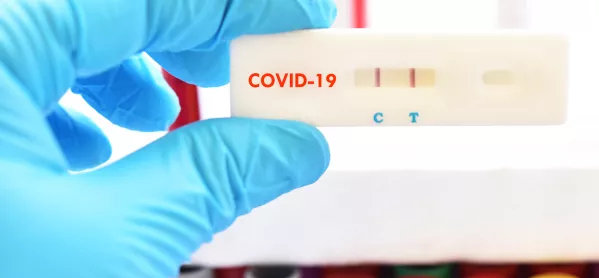Mass use of rapid turnaround tests may have the “opposite effect” of what they are aiming to achieve, with false results potentially forcing more schools to close, scientists have said.
The mass testing programme has been rolled out across the education sector, including schools and colleges, as well as some businesses and workplaces, and health and care services.
But researchers said the tests could be put to better use in different scenarios, such as by paramedics treating unwell patients and at GP surgeries.
Heads: Covid test policy ‘could mean 250,000 students sent home in error’
Warning: ‘Strange’ lack of positives from school Covid tests
U-turn: PCR tests to stop false positives grounding pupils
As cases reduce in the population, a higher amount of false results will be expected and there will come a point when the testing strategy is “doing more harm than good”, experts cautioned.
The comments come after a new review of the data on rapid turnaround tests.
The Cochrane Review concluded that rapid tests are better at finding infections among people with symptoms than people without them.
The review, which contains data from 64 studies, concluded that, on average, 72 per cent of people with symptoms who had Covid-19 were correctly identified as being infected.
In people without symptoms, on average, the antigen tests correctly identified 58 per cent of those who were infected.
They had a higher degree of accuracy for ruling out infection.
Jon Deeks, professor of biostatistics at the University of Birmingham, and an author of the review, said the tests could be used on a “test to detect” basis but should not be used for “test to release” or “test to enable”.
Professor Deeks said that in a group of 10,000 people without symptoms, with a prevalence rate of 0.5 per cent, which is similar to recent studies on Covid-19 in the community, around 50 people would expect to have Covid.
But, in theory, the tests would pick up 35 of the 50 cases.
And in the process, the tests could also create 90 false positives.
“In this example here, we actually are creating more false positive results than we are detecting real cases,” he said.
Professor Deeks said there are no studies that looked at the accuracy of using these tests in repeated testing strategies, such as those in hospitals and schools.
“The only data we have on how well that test works in asymptomatic (people) is based on the Liverpool and the Birmingham University studies - (in which) a total of 78 people had Covid,” he said.
“And so we’ve used that test - around 40 million tests given out - and all we have for the basis of how well it works is from 78 people who had Covid.
“So I personally find that quite shocking - the government thinking that’s an adequate evidence base upon which to base such a large, expensive and quite invasive policy for people to follow.”
He added: “When prevalence drops, you get more false positives and fewer true positives, that’s a mathematical certainty, and there’s a point where you should stop.
“We may already be below that point - it hasn’t really been established as to when it is that we’re actually going to be doing more harm than good.
“There is a point where the harm is going to outweigh the benefits of doing testing like this.”
Ann Van den Bruel, associate professor of primary care at KU Leuven in Belgium, and an author of the review, said: “The risk of the false positives in the screening setting is very high, and you may end up having the opposite effect of what you want to achieve, and you may have to close more workplaces, more classes than what you’re currently doing without a clear effect on the epidemic, which is what we all want, of course.”




